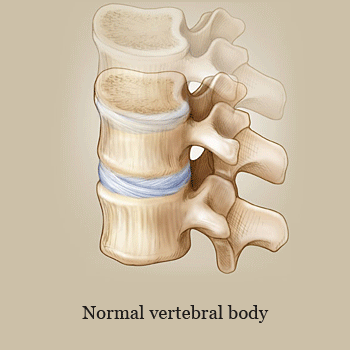TREATING COMPRESSION FRACTURES WITH
In-Office Kyphoplasty
Immediate Pain Relief
Quick Recovery
Avoid Hospital Stays
The Huffman Clinic offers In-Office Kyphoplasty which can provide major pain relief for those suffering from compression fractures of the spine.
Many times, unfortunately, patients are unaware that the root of their pain is a compression fracture. Our team will start by finding an accurate diagnosis and treatment plan.
Kyphoplasty is a minor procedure to treat painful compression fractures. At Huffman Clinic, we can perform Kyphoplasty right in our office allowing you to avoid hospital visits and receive treatment within a few days of consultation.
Appointment Request
You will receive an automated email and text message confirmation that we received your request.
What is a Compression Fracture?
A compression fracture is a fracture of the vertebra that is associated with weak bone such as in osteoporosis. Often the fracture can occur with minimal trauma. Compression fractures can be very painful and lead to significant disability until they heal. For more on compression fractures, click here.

Why do a Kyphoplasty?
While most fractures will eventually heal, the period of decreased activity that occurs while waiting for them to heal can lead to considerable deconditioning. Deconditioning is very bad for elderly patients and the loss of function is something they may never recover from. Compression fractures treated with kyphoplasty will often feel better almost immediately, minimizing the recovery time and avoiding the deconditioning associated with prolonged recovery. Several long term studies have been done that demonstrate lower morbidity and mortality when patients with painful compression fractures are treated with Kyphoplasty compared to patients that are just given time to heal.*
Most kyphoplasties performed by Dr. Huffman are done in the office so there is no need to go to the hospital or the operating room. This is much more convenient than going to the hospital. Typically it takes little time to arrange so you may get the procedure within a day or two of your consultation. There is no IV required, you can eat before hand and you don’t even have to change out of your own clothes.
Note* if you take blood thinners you will most likely need to stop them before the procedure, possibly for several days. Please inform Dr. Huffman and his staff if this is the case

What happens during in-office kyphoplasty?
Typically before you come to the office a mild pain medication or sedative along with an antibiotic sill be prescribed. You should pick these medications up at your pharmacy and take them as directed before the procedure. You should not drive when taking pain medications or sedatives so you will need someone to drive you to the procedure. Plan on being at the office for about an hour and a half.
Unlike surgery you may eat normally before an in office kyphoplasty. You will be advised to wear loose fitting clothing with no metal on it including zippers and buttons. For the kyphoplasty you will lay on your stomach and your top will be lifted to expose your back. If you wear appropriate clothing there will be no need to change into a gown.
Once you are positioned your back will be cleaned with a solution to kill bacteria on your skin. Using X-Ray guidance the broken bone will be identified and local anesthetic will be injected to numb up the skin and tissue down to the bone. A large needle will then be inserted through a very small incision and tapped into the bone. A balloon is then inserted through the large needle into the bone to make space and potentially restore the height of the compressed fracture. The balloon is then removed and bone cement that has the consistency of thick glue is injected into the space created by the balloon. The cement hardens very quickly and the large needle is removed. The small incision is closed by skin glue. After the glue is dry we will assist you in getting up and when you are ready you are free to go home.
What about doing a kyphoplasty in the hospital?
How successful is Kyphoplasty?
What do you do after a kyphoplasty?
Often times patients will continue to have some pain even after the kyphoplasty. This may be due to the deconditioning that occurred between the time of the fracture and the time that the kyphoplasty was done. One way to minimize this is to get the kyphoplasty done more quickly which is a major benefit to doing the procedure in the office. It this occurs or if you just need help getting your strength we will often refer you to physical therapy.
Who should not have a kyphoplasty?
What are the risks of kyphoplasty?
Lastly, a note about osteoporosis and fracture prevention:
Follow Us
Request An Appointment
Address: 3273 Claremont Way, Ste. 201, Napa, CA 94558
Phone: 707-603-1042

